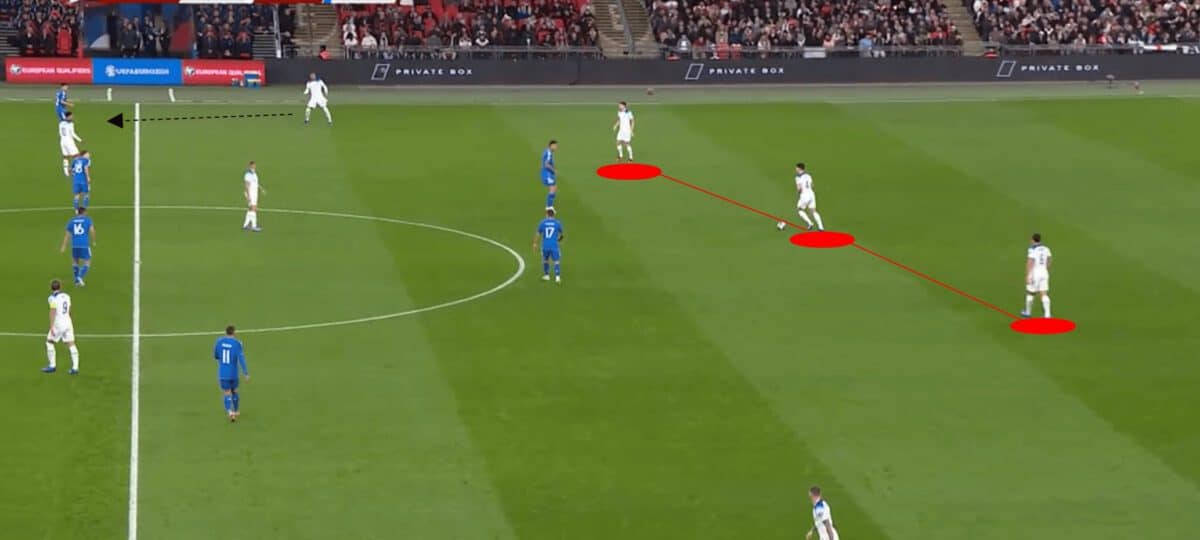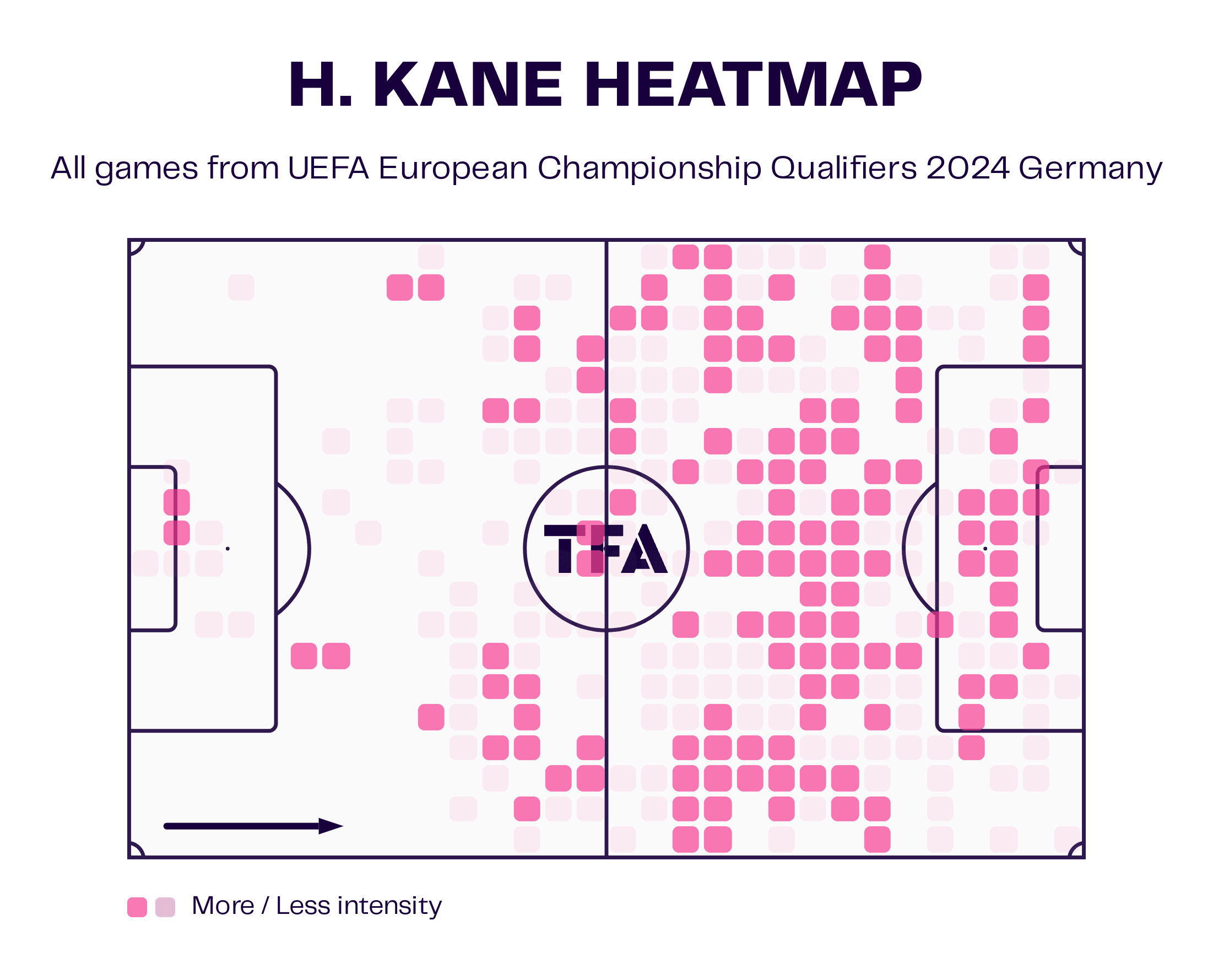The International and Domestic Management Crossover: Assessing Gareth Southgate’s suitability for Manchester United – tactical analysis
The Glazer’s control over Manchester United has been turbulent, to say the least. The American-based owners have been accused of letting one of the biggest clubs in world football left to rot. All the while, they profit financially, living off the history of the club.
However, this season has brought new optimism to Manchester’s red side following the announcement that Sir Jim Ratcliffe has acquired a stake in the club. Although not the majority shareholder, it has been reported that Ratcliffe has control of the football operations at the club.
Changes behind the scenes are already starting to take shape, including Sir David Brailsford taking up a committee position, aiding in the football operation decisions. Whilst Erik ten Hag remains in the top job at Old Trafford, speculation has been rife in recent weeks that Ratcliffe is preparing for next season and introducing a new manager.
The current England manager, Gareth Southgate, is allegedly top of the list to replace the Dutchman. However, the fanbase has had a mixed reaction to this news, with many believing that Southgate is not the answer to United’s problems.
In this tactical analysis, we will delve into Southgate’s managerial statistics as well as others who have experience leading national sides as well as domestically. Furthermore, we will assess Southgate’s tactics and provide an analysis of what is needed at Old Trafford in order to find themselves competing for titles again.
National and domestic crossovers
If Southgate were to be appointed at United, it wouldn’t be his first stint at club football. The former defender led Middlesbrough from 2006 until 2009. However, on paper, his time at the Riverside doesn’t make for the most positive reading.
As the above table shows, Southgate’s record in the north-east declined as the seasons went by in the top flight. The 2008/09 campaign resulted in relegation from the Premier League.
The statistics, though, don’t provide full context. Southgate was appointed at Boro following the most successful stint in their history, fresh from a European final. Had Boro won that game, they would have played Barcelona in the UEFA Super Cup final. The reality, however, was a four-nil defeat to serial winners Sevilla.
The European dream was over, and a disappointing 14th-place finish ensured Southgate was tasked with leading Boro into a new era. It was a tough ask for then-35-year-old Southgate, who had to make the transition from captain to manager without the necessary coaching badges to his name at the time. Southgate has since gone on record to state he doesn’t believe he got the credit he deserved for those first two seasons, and it’s hard to disagree with that sentiment.
In his first season in charge, only four teams in the Premier League had less money to splash in the transfer window. Whilst the budget increased considerably in his second season, the purse strings were tightened in the relegation campaign, where only Blackburn spent less on new recruits.
With financial constraints, Southgate’s mid-table finishes were admirable. However, that’s not to say Southgate didn’t have his flaws. Boro spent a record £12 million on Brazilian striker Afonso Alves, but he left with only 10 goals from his time in the north-east—costing Steve Gibson more than £1 million a goal in the process.
Hindsight is a big thing in football. Had Alves been utilised in a forward three with willing runners such as Tuncay and Jérémie Aliadière, maybe the Brazilian’s time at the Riverside could be looked back on more favourably. That being said, Southgate has since said that he has learned so much since his time at Boro.
Moreover, it would be unfair to assess Southgate’s United credentials based on his first managerial position alone. The football landscape has changed from 15 years ago. To put it into context, Boro finished above Newcastle and Manchester City in Southgate’s first season in the dugout. Both have since been backed by significant foreign investment. In contrast, since relegation in the late noughties, Middlesbrough has had only one season back in the top flight.
Southgate’s return to management following his eventual dismissal at Boro came with the England Under-21s. Here, the former defender had a 73-win percentage rate. Since his promotion to the England national team, Southgate has won 62% of his matches. This highlights the improvement Southgate has made since his first managerial appointment.
There are still question marks, though, as to whether his strong record in international management could transcend to club level. However, José Mourinho recently stated that now Southgate has the experience of the England job, he is capable of any managerial role in football.
Furthermore, a look at previous England managers shows some successes at club level.
Like Southgate, Robson took England to a World Cup semi-final. Following his spell at England, Robson transformed Newcastle from a side languishing in mid-table to the Champions League. The Geordies had to wait nearly 20 years to return to the competition following Robson’s sacking.
Moreover, in the case of Hodgson, one of his first managerial appointments at Bristol City was anything but successful. However, following a positive spell at Neuchâtel Xamax, he led the Swiss national team to the World Cup knockout stages – when they hadn’t qualified for a major tournament in the 28 years prior. Given Hodgson’s success at club level since, it goes to exemplify that it is possible for managers to be a success both internationally and domestically.
Southgate’s pragmatism and professionalism
When Southgate was appointed England manager, it was amid turmoil following the dismissal of Sam Allardyce, who led the national side for one solitary match. It has been well-opinionated that in the tournaments prior to the ex-Boro man’s arrival, England’s golden generation of players never fulfilled their potential.
This was partly due to a divide among players due to club allegiances. However, Southgate was eager to transform the culture within the England camp. His mantra has been to create a positive camaraderie, whereby the set-up at St George’s Park still has the familiarity of club-level football. The media has since been rife with regard to the goodwill in such camps, and England’s runs at international tournaments galvanised the country.
There is no doubt that the England team culture has improved under Southgate’s guidance. However, the former defender still has his critics, with some quarters believing he has failed to exploit the wealth of talent in the England forward line.
This is partly due to England’s slow buildup play. Often, the ball is played out from the back, with a defensive midfielder—typically Declan Rice—dropping deep to form a back three.
From here, the full-backs can push higher, looking to provide under or overlapping crosses. However, England’s difficulty is being up against a low block. This forces the likes of Harry Kane to drop deeper to try and influence play, as demonstrated by the heatmap below for the recent qualifiers.
However, it’s not ideal to have your record goal-scorer take up such deep positions as he is then less likely to be a threat in the penalty area, where the chances of scoring are greater. That being said, England’s strength is its ability to rotate positions among the playing personnel.
As one player drops deep in anticipation of finding a pocket of space to advance play, it gives another license to roam forward. This, in turn, gives their attacking play an air of unpredictability, which can give them an edge over opponents.
A stand out from England under Southgate has been their strong defending credentials, conceding few goals in tournament football. He may, however, be more willing to adopt a more attacking approach if he returned to club football. After all, tournament football can be a bit of a lottery, and Southgate will have known too well the need for pragmatism as his side wouldn’t have been able to afford to succumb to early goals in knockout competitions.
The fact that Southgate has done so well in tournaments, consistently taking his side to the latter stages, speaks volumes for his credentials. He may not have won anything, but if tournament football was that easy, surely Pep Guardiola would have more than three Champions League titles to his name.
In terms of defensive approaches, Southgate has typically set up his side in a mid-block, looking to be compact as a unit as possession is recycled across the pitch.
Such examples are shown above. However, it should be noted that over the years, with Southgate at the helm, England’s pressing game has changed. For example, in Russia at the 2018 World Cup, the Three Lions had a 14.33 PPDA, compared to a much reduced 9.24 PPDA value at the more recent World Cup in 2022 in Qatar. This suggests that England now allows their opponents much less time on the ball.
The statistics suggest Southgate has adapted his side’s style as time has elapsed. This is more evident if you factor in the formation. In the earlier years of Southgate’s time in charge, England deployed three at the back, utilising a 3-5-2 shape for 68% of matches at the 2018 World Cup. However, more recently, in the European Qualifiers, England has lined up in a 4-2-3-1 for 45% of fixtures.
The art of adapting—not an easy feat—goes hand in hand with international management. Southgate hasn’t had the luxury of a bottomless transfer kitty while overseeing England. He has to work with the players available.
A positive in being able to coach such a long list of players from different clubs with different tactics is the insight Southgate may have gained from such individuals. Whilst we can only speculate how much Southgate has learned from the likes of Guardiola and Jürgen Klopp through his England players, there is a good chance he will have picked up some valuable knowledge along the way.
As the old saying goes, knowledge is power, and this could give Southgate an edge if he opts to return to club football.
United’s agenda
In recent seasons, United has made the headlines for its off-the-field antics as much as its on-field ones. Given his reputation for improving the in-house culture, it is not too surprising that Southgate has been so heavily linked lately.
Moreover, if you look back to United’s history, you will see that it has been synonymous with developing young talent. We are all well averse by now on the Class of ‘92 and while academy graduates have still been able to make the grade at Old Trafford of late, there are fears that United are losing promising prospects to their noisy neighbours, City.
Given Southgate’s previous management with the Under-21 setup, he would be well-tuned to giving opportunities to United youngsters. This, coupled with an improved culture, may make the red half of Manchester a more enticing prospect for the young talent pool.
With regard to matters on the pitch, though, United’s biggest critique of late from pundits has been their lack of evident playing identity. Whilst ten Hag hasn’t replicated his possessional-based game from his Ajax days, he has been vocal about wanting to adopt a playing philosophy more associated with the United of old – playing fast and direct in attack.
Credit to the Dutchman, this is something he has achieved. United ranks top of the division for direct attacks with 72; they rank seventh for attacking speed, averaging 1.89m/s ball progression upfield.
An example is shown above: upon retrieving possession, Bruno Fernandes plays a long ball towards Marcus Rashford, who dribbles towards the goal. However, Rashford opts to go alone and wins a corner. It may have been a better option to pass toward Alejandro Garnacho in the centre.
Part of the issue with this style of play is the unpredictability in the sense it is dependent on how the opponents use the ball before United can progress forward. This doesn’t tally with the United of old, where it was more of a case of how United could hurt teams rather than look to unbalance the opposition.
Moreover, this direct style hasn’t necessarily played to the strengths of their forward man, Rasmus Højlund, as the Dane has struggled for involvement in matches at times this season.
In the league fixture against Liverpool, it is shown how the majority of Højlund’s touches came deep in the opposition half and only had two touches in the penalty area. Although the summer signing from Atalanta, has improved in recent weeks, he did suffer a goal drought earlier in the campaign.
This was not helped by the Dane’s lack of service this season. United averages 1.29 crosses into the box per 90 minutes—only Burnley and Sheffield United are averaging less. Højlund was known for his poacher instinct in Italy, often scoring in and around the six-yard box, but with so few crosses by the Red Devils, it’s no wonder he has not been able to quite replicate his form.
United’s somewhat haphazard approach to attacks has led to a poor goal return this campaign. They have only netted 39 times, bettering only five other teams in the division. For a club the size of United, it’s a staggering statistic.
The lack of goals this season has undoubtedly not been helped by the decline in form of Rashford, who last season contributed 29% of United’s league goals.
The radar chart compares Rashford’s ranking from last season to this campaign, and it’s apparent the forward’s overall game has not reached the same standards this time around. He is, however, still within the England fold, and given Southgate still has the conviction. to select Rashford, this would suggest his faith that he can get the best out of him. This wouldif he were to be appointed at Old Trafford.
However, Southgate is arguably not the right candidate for United, given that his playing style is not synonymous with the United way. Furthermore, his cautious approach to matches does not align with a team that is in desperate need of firepower upfront, especially given their ambition to challenge for titles again.
Southgate’s defensive principles could benefit United, though. Despite boasting one of the best defensive records in the league this season, United are often exposed at the back.
United struggles when the opposition drives forward. The opposition averages 23.1 progressive carries per 90, 16 carries into the final third per 90, and 6.46 carries into the penalty area per 90 against United. This demonstrates how vulnerable Ten Hag’s side is in advanced areas of the pitch, especially as each of these unwanted statistics is within the top five in the league.
The solid foundations that Southgate could bring may leave fewer gaps in the midfield spaces and provide a starting block for United to gain more control of matches. Whether United would want to opt for pragmatism, though, remains to be seen.
Conclusion
We have demonstrated that it is plausible for managers to be successful on the international stage as well as domestically. Therefore, don’t write off Southgate returning to club football. However, whether this will be at United is debatable.
The articulate former Boro boss could spearhead an improved culture and may bring new ideas to the dugout. However, his approach to matches may not appease the fanbase; some would rather stick with Ten Hag.
When Alex Ferguson retired, he stressed the importance of “stand by your manager.” This message, fair to say, has been neglected. Whoever takes the reins at Old Trafford from next season needs to be afforded time. Rome wasn’t built in a day, and neither, as is proving, a post-Fergie United.












